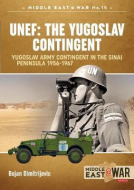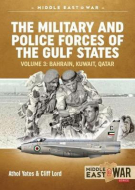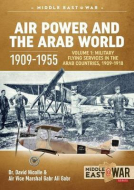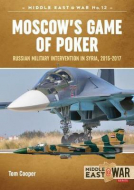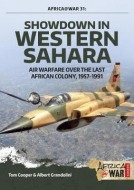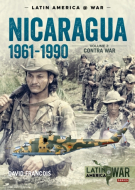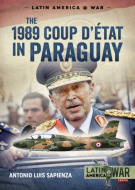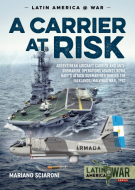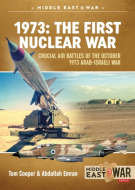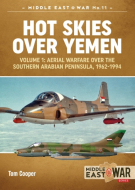
- Agriculture
- Architecture & Design
- Arts & Photography
- Biography
- Business
- Calendars and Diaries
- Childrens (All)
- Childrens (Illustrated)
- Childrens (Picture flats)
- Childrens (Te Reo)
- Classics
- Cooking, Food & Drink
- Craft & Hobbies
- Design (Art / Graphics)
- Design (Interiors)
- Education
- Fashion
- Fiction & Literature
- Fiction - Young Adult
- Gift Ideas
- Health & Wellbeing
- History
- Home & Garden
- Humour & Gift
- Instead of a Card Poems
- Military
- Music
- New Zealand
- NZ (History)
- NZ (Landscapes)
- NZ (Pictorial)
- Poetry
- Reference
- Religion & Faith
- Science & Nature
- Sport & Recreation
- Stationery
- Taschen : 40th Anniversary Edition
- Taschen : BA Basic Art
- Taschen : BU Bibliotheca Universalis
- Te Reo Māori
- Transport
- Travel
History (457)
|
UNEF The Yugoslav Contingent (Middle East@War 25)
ISBN: 9781912866410 Author: Bojan Dimitrijevic Publisher: Helion & Company Pursuing a policy of social revolution, national liberation, and non-alignment, Yugoslavia under Josip Broz Tito became involved in the Middle East in the mid-1... Pursuing a policy of social revolution, national liberation, and non-alignment, Yugoslavia under Josip Broz Tito became involved in the Middle East in the mid-1950s. Combined with some initial interest in economic and military assistance, this involvement found a positive reception among several Arab states, foremost Egypt under Gamal Abdel Nasser. Close personal ties between Tito and Nasser significantly contributed to the deployment of a contingent from the Yugoslav Popular Army (JNA) within the United Nations Emergency Force (UNEF) in Egypt, following the Suez War of 1956. Established in a hurry and deployed to Egypt in late November 1956, the JNA's part of the UNEF consisted of a reinforced reconnaissance battalion. The unit was manned by conscript soldiers and equipped with vehicles provided by the USA within the frame of the Mutual Defence Assistance Program (MDAP). The story of the unit's difficult task of entering the Sinai Peninsula right on the heels of withdrawing Israeli forces is the centerpiece of this book. While warmly welcomed by the local inhabitants, through late 1956 and all of 1957, the JNA contingent had the difficult task of reaching the demarcation lines, establishing observation posts, and making sure the cease-fire would be respected by all of the belligerents. For a force that understood itself to have a national-liberation and revolutionary role, rather than being an expeditionary military, the Yugoslav Popular Army thus went through a particularly unusual experience. The mission of the JNA's contingent with the UNEF on the Sinai came to a sudden end during the crisis leading to the June 1967 Arab-Israeli War: squeezed between the advancing Israeli forces, it had to be quickly evacuated, leaving all its heavy equipment and vehicles behind. Prepared with help of the original documentation from a host of archival sources of the former JNA, the book Yugoslav UNEF Contingent focuses foremost on the deployment immediately after the Suez Crisis of 1956. Providing detailed coverage of the much underreported closing chapter of that conflict, it is illustrated by more than 150 original photographs, most of which have never been published before. Bind: paperback Pages: 72 Dimensions: 210 x 297 mm |
$49.99 |
|
|
The Military and Police Forces of the Gulf States Volume 3 (Middle East@War 40)
ISBN: 9781912866427 Authors: Athol Yates, Cliff Lord Publisher: Helion & Company The Military and Police Forces of the Gulf States, Volume 3, covers the military, police, and selected para-military services of Bahrain, Kuwait and Qatar from ... The Military and Police Forces of the Gulf States, Volume 3, covers the military, police, and selected para-military services of Bahrain, Kuwait and Qatar from early 20th Century until 2010. Great Britain and these three states have had various mutual defence treaties since centuries. This resulted in establishment of very close ties between the British and the Sultan of Oman's armed forces. Since 1920s, the British seconded and contract personnel served with the latter services through forming, leading, advising and training them. Bind: paperback Pages: 72 Dimensions: 210 x 297 mm |
$49.99 |
|
|
Air Power and the Arab World 1909-1955 Volume 1 (Middle East@War 20)
ISBN: 9781912866434 Authors: David Nicolle, Air Vice Marshal Gabr Ali Gabr Publisher: Helion & Company At a time when multiple wars are raging across much of the Middle East, it is almost forgotten that it was Abu al-Qasim Abbas ibn Firnas ibn Wirdas at-Takurni -... At a time when multiple wars are raging across much of the Middle East, it is almost forgotten that it was Abu al-Qasim Abbas ibn Firnas ibn Wirdas at-Takurni - an Andalusian inventor, physician and engineer - who was the first person to undertake experiments in flying with any degree of success. That was back in the 9th Century A.D. Nigh on a thousand years later the Arab World's critical strategic location made it almost inevitable that these regions would be drawn into the imperial rivalries of the leading European powers, while the Ottoman Empire struggled to maintain its existing position in the area. This in turn meant that the first bombs to be dropped by military aircraft fell on Arab soil. Not surprisingly, as the Arab countries slowly achieved their independence, they too wanted to have air forces. In 1948 the first such Arab air forces were thrown into battle in an ill-fated attempt to keep Palestine as a primarily Arab country. Based on decades of consistent research, but also newly available sources in both Arabic and various European languages, and richly illustrated with a wide range of authentic photography, Volume 1 of the 'Air Power and the Arab World, 1909-1955' mini-series is telling the story of the men and machines of the first half century of military aviation in the Arab World. Bind: paperback Pages: 96 Dimensions: 210 x 297 mm |
$49.99 |
|
|
Moscows Game of Poker (Middle East@War 15)
ISBN: 9781912390373 Author: Tom Cooper Publisher: Helion & Company In August 2015, the government of the Russian Federation embarked its military forces on an intervention in Syria. Ever since, there is no end of discussions ab... In August 2015, the government of the Russian Federation embarked its military forces on an intervention in Syria. Ever since, there is no end of discussions about Russian military capabilities and intentions - in Syria and beyond. To many, the performance of the Russian military - and especially the Russian Air-Space Force (VKS) - in this war was a clear demonstration of advanced technology, improved training, fearsome firepower, and great mobility. To others, the military operation only experienced limited success and exposed a number of weaknesses. Foremost between the latter are aircraft ill-suited to the necessities of expeditionary warfare, and a gross lack of advanced weaponry and equipment. While the military component of their intervention can only be described as providing clear evidence that the Russian military is in no condition to directly challenge the NATO's eastern frontiers, it cannot be denied that through this action Moscow instrumented a turning point in the Syrian Civil War, and indeed one on geo-strategic plan. Organized and run in cooperation with very diverse allies - ranging from the Islamic Revolutionary Guards Corps of Iran (IRGC), Hezbollah of Lebanon, the Kurdishan Workers Party (PKK) and a myrad of local warlords and their armed militias - their combination of intentional bombardment of insurgent-controlled parts of Syria, and indirect protection for the IRGC's own military intervention in the country from a possible counter-intervention of the West, the Russians did succeed in saving the regime of the Syrian President Bashar al-Assad. Through this, this campaign created an absurd precedent in newest history: a brutal dictatorship involved in systematic elimination of hundreds of thousands on industrial scale, and frequently with help of chemical weapons, was even made popular within circles of far-right and far-left alike around the World. In turn, the resulting flow of refugees destabilized the European Union and large parts of the NATO - two parties considered the actual primary opponents by the government in Moscow - and increased the popularity of the President Vladimir Putin to unprecedented levels. Illustrated by over 130 photographs, maps and color profiles, 'Moscow's Game of Poker' is providing a clear outline of the participants in this extremely complex conflict, and areas it impacts. It is providing a unique and in-depth study of Moscow's political aims, strategy, doctrine, target selection process, military technology and tactics, day-by-day operations, and the way the Russian Federation cooperates with diverse local allies. This story is told in combination with an exclusive insight into the similar campaign run by what is left of the Syrian Arab Air Force. Bind: paperback Pages: 80 Dimensions: 210 x 297 mm Publication Date: 16-11-2018 |
$49.99 |
|
|
Showdown in Western Sahara Volume 1 (Africa@War 33)
ISBN: 9781912390359 Author: Tom Cooper Publisher: Helion & Company The former colony of Spanish Sahara saw frequent outbursts of tribal and ethnic rebellions already while ruled by colonial authorities, in the late 19th and thr... The former colony of Spanish Sahara saw frequent outbursts of tribal and ethnic rebellions already while ruled by colonial authorities, in the late 19th and through early 20th Century. Its vastness and distances de-facto dictated the application of air power in response. While most of these attracted next to no attention in English-language media, at least the large-scale operations of the Spanish colonial authorities of the late 1950s became notable for the final combat deployment of the famous Messerschmitt Bf.109. Narby, their common history as former French colonies resulted in a short war between Algeria and Morocco, which in turn prompted an arms race that lasted well into the 1980s. Following much more action than was ever reported in the media, and amid growing resistance from natives and increasing international pressure, Spain withdrew from Spanish Sahara in 1975, indirectly opening a new chapter of this part of the world, which is going to be covered in Volume 2. Warfare in Western Sahara has in many ways become exemplary for modern-day counter-insurgency efforts in Africa and elsewhere. This is so in regards of this conflict being mis-declared as a part of some larger, external conflict - like the Cold War - in regards of the concept of an insurgency applying motorized forces to deliver often spectacular 'hit-and-run' attacks; and in regards of a conventional military reacting with a combination of earth berms and air power. Illustrated by over 100 photographs, dozen of maps and 15 color profiles, Showdown in Western Sahara, Volume 1 offers a fascinating study of the military aspects of this conflict, warfare strategies, tactics and experiences with different weapons systems. Bind: paperback Pages: 72 Dimensions: 210 x 297 mm Publication Date: 07-02-2019 |
$49.99 |
|
|
Nicaragua 1961-1990 Volume 2 (Latin America@War 15)
ISBN: 9781911628682 Author: David Francois Publisher: Helion & Company In 1979, the Sandinista government established itself in power in Managua, the capitol of Nicaragua. It found the country ruined by the long war against the Som... In 1979, the Sandinista government established itself in power in Managua, the capitol of Nicaragua. It found the country ruined by the long war against the Somosa dictatorship and natural disasters alike, and nearly half of the population either homeless or living in exile. Attempting to restructure and recover the underdeveloped economy, Sandinisas introduced a wide range of reforms and a cultural revolution. Considering the Sandinistas to be ‘Cuban-supported Marxists’ and therefore a major threat to the US domination of Latin America, in 1980-1981 the USA began supporting the creation of the Contrarevolutionary forces (better known as ‘Contras’), and thus helped provoke a new war that was to rage through Nicaragua until 1988. Leaning upon extensive studies of the armed groups involved, and their combat operations of the 1981-1988 period, ‘Nicaragua, 1961-1990, Volume 2’ provides an in-depth coverage of military history during the second phase of one of bloodiest, and most-publicised armed conflicts of Latin America in modern times. Guiding the reader meticulously through the details of the involved forces, their ideologies, organisation and equipment, this book offers a uniquely accurate, blow-by-blow account of the Nicaraguan War and is profusely illustrated with more than 120 photos, maps, and colour artworks. Bind: paperback Dimensions: 210 x 300 mm Publication Date: 15-07-2019 |
$49.99 |
|
|
The 1989 Coup DEtat in Paraguay (Latin America@War 11)
ISBN: 9781911628699 Author: Antonio Luis Sapienza Fracchia Publisher: Helion & Company The year 1989 was crucial for Paraguay. After a long period of 35 years of dictatorship, General Alfredo Stroessner was finally overthrown by a violent coup d�... The year 1989 was crucial for Paraguay. After a long period of 35 years of dictatorship, General Alfredo Stroessner was finally overthrown by a violent coup d’état. In a sort of prophetic way, he once said …”I came to power by arms and I will only leave by arms” and that came true on 2 February of that year. The 1989 Coup d’état in Paraguay discusses Stroessner’s climb to power during a coup of 1954, fraudulent elections that got him re-elected seven times, and the ways Stroessner kept himself afloat through cooperation with the armed forces, a right-wing political party, and the USA. Arguably, longing to maintain his popularity, the dictator launched a large number of major development projects, including construction of roads, water and sewage facilities, three big hydro-electrical power stations, and a build-up of an airline. At the same time, abuse of human rights and oppression of any kind of political opposition became a norm: dozens of political prisoners were tortured and even executed, and thousands driven into exile. As could be expected from a dictator with a military background, Stroessner prompted a major expansion and a build-up of the armed forces and the police, too. Nevertheless, it was the armed forces of Paraguay that brought about his demise: the coup that finally ended Stroessner’s rule was planned by General Andres Rodriguez, the Commander of the I Army Corps – and then with full support of large segments of the Army, Air Force and the Navy of Paraguay. A detailed description of the coup in question, and how Stroessner was driven into exile in Brazil, is the centrepiece of this narrative. Thirty years since the fall of Stroessner’s regime, many things have changed in Paraguay: still, many remain the same. Containing over 100 photographs, colour profiles, maps and extensive tables, ‘The 1989 Coup d’etat in Paraguay’ is a unique study and a source of reference about an important episode in Latin American history. Bind: paperback Pages: 64 Dimensions: 210 x 300 mm Publication Date: 15-02-2019 |
$49.99 |
|
|
A Carrier at Risk (Latin America@War 14)
ISBN: 9781911628705 Author: Mariano Sciaroni Publisher: Helion & Company The naval warfare of the last few decades appears dominated by operations of fast missile craft and a wide diversity of other minor vessels in so-called ‘litt... The naval warfare of the last few decades appears dominated by operations of fast missile craft and a wide diversity of other minor vessels in so-called ‘littoral warfare’. On the contrary, skills and knowledge about anti-submarine warfare on the high seas – a discipline that dominated much of the World War II, and once used to be the reason for existence of large fleets of the North Atlantic Treaty Organisation (NATO) and of the Warsaw Pact – appear nearly extinct. Indeed, it seems that no armed conflicts involving this form of naval warfare have been fought for a significant time. As so often, the reality is entirely different. Submarine and anti-submarine warfare remain one of most sophisticated forms of armed conflicts to this day. Unsurprisingly, considering the amount of high-technology equipment necessary for their conduct, they are shrouded behind a thick veil of secrecy. This is why the operations of the sole Argentinean aircraft carrier – ARA 25 de Mayo – during the much-publicised war in the South Atlantic of 1982 remain largely unknown until this very day. It is well-known that the United Kingdom deployed the largest task force its Royal Navy had assembled since the Korean War over 12,000 kilometres away from home. It is well-known that the operations of this task force proved decisive for the outcome of the war: it not only brought the air power that established itself in control of the air space over the battlefield, but also hauled all the troops and supplies necessary to recover the islands that were the core of the dispute. However, the impression created very early during this conflict – and largely maintained until today – is that ARA 25 de Mayo and other elements of the accompanying Task Force 79 of the Argentinean Navy were forced into a hurried withdrawal by the sheer presence of multiple nuclear attack submarines of the Royal Navy. Based on years of research, including extensive investigation into naval operations of both sides of the conflict, ‘A Carrier at Risk’ is a vibrant and lucid account of a week-long cat-and-mouse game between anti-submarine warfare specialists on board ARA 25 de Mayo, and multiple nuclear attack submarines of the Royal Navy: an entirely unknown, yet crucial aspect of the South Atlantic War. Illustrated by over 100 photographs, maps, and colour profiles, this volume closes one of the major gaps – though also a crucially important affair – in the coverage of this conflict. Bind: paperback Pages: 88 Dimensions: 210 x 300 mm Publication Date: 15-03-2019 |
$49.99 |
|
|
1973: The First Nuclear War (Middle East@War 19)
ISBN: 9781911628712 Authors: Tom Cooper, Abdallah Emran Publisher: Helion & Company The majority of narratives about the October 1973 Arab-Israeli War stress that air power did not play a dominant role. The deployment of strong, well-integrated... The majority of narratives about the October 1973 Arab-Israeli War stress that air power did not play a dominant role. The deployment of strong, well-integrated air defences by Egypt and Syria, that caused heavy losses to the Israeli air force early during that conflict, not only spoiled Israel’s pre-war planning, but prevented it from providing support for Israeli ground forces too. A cross-examination of interviews with dozens of Egyptian participants in that conflict, contemporary reporting in the media, and also intelligence reports, offers an entirely different picture. Accordingly, for much of that war, the Israelis flew heavy air strikes on Port Said, on the northern entry to the Suez Canal. Furthermore, they repeatedly attacked two major Egyptian air bases in the Nile Delta – el-Mansourah and Tanta – in turn causing some of the biggest air battles of this war. Indeed, in Egypt, the response to these attacks reached the level of legend: the supposed repelling of an Israeli air strike on el-Mansourah, on 14 October 1973, prompted Cairo to declare not only a massive victory, but also that date for the day of its air force. However, the actual reasons for Israeli air strikes on Port Said, el-Mansourah and Tanta remain unclear to this day: there are no Israeli publications offering a sensible explanation, and there are no Egyptian publications explaining the reasoning. Only a cross-examination of additional reporting provides a possible solution: el-Mansourah was also the base of the only Egyptian unit equipped with R-17E ballistic missiles, known as the SS-1 Scud in the West. As of October 1973, these missiles were the only weapon in Egyptian hands capable of reaching central Israel – and that only if fired from the area around Port Said. While apparently unimportant in the overall context, this fact gains immensely in importance considering reports from the US intelligence services about the possible deployment of Soviet nuclear warheads to Egypt in October 1973. Discussing all the available information, strategy, tactics, equipment and related combat operations of both sides, ‘1973: the First Nuclear War’ provides an in-depth insight into the Israeli efforts to prevent the deployment of Egyptian Scud missiles – whether armed with Soviet nuclear warheads or not – in the Port Said area: an effort that dictated a lengthy segment of the application of air power during the October 1973 Arab-Israeli war, and resulted in some of the most spectacular air-to-air and air-to-ground battles of that conflict. Illustrated by over 100 photographs, a dozen maps and 18 colour profiles, this book thus offers an entirely new thesis about crucial, but previously unknown factors that determined the flow of the aerial warfare in October 1973. Bind: paperback Pages: 80 Dimensions: 210 x 300 mm Publication Date: 15-06-2019 |
$49.99 |
|
|
Hot Skies over Yemen Volume 1 (Middle East@War 11)
ISBN: 9781912174232 Author: Tom Cooper Publisher: Helion & Company Since September 1962, hardly a week has passed without a major armed confrontation or an outright war in Yemen. The number of long-lasting insurgencies, mutinie... Since September 1962, hardly a week has passed without a major armed confrontation or an outright war in Yemen. The number of long-lasting insurgencies, mutinies, rebellions, or terrorism-related activities that took place during this period numbers in the dozens. Despite the duration of all these conflicts, and although they may have caused as many as half a million of deaths, the rest of the World has heard very little about them. At best, Yemen is nowadays known as a hotbed of international terrorism, an area that is on the receiving end of frequent US air strikes flown by UAVs, or as 'some place' fiercely bombarded by a coalition led by Saudi Arabia. While at least some details about British operations in what was Southern Arabia of the 1960s have been published over the years, next to nothing is known about the activities of local air forces. This is even more surprising considering that for nearly two decades there were no less than two, fully-developed services of that kind - one operated by what was then North Yemen, another by what used to be South Yemen - and that these were deeply involved in the Cold War, too. Using newly released secret intelligence sources, neglected memoirs, and popular memory, this tells the story of military aviation in Yemen since 1962. It provides in-depth insights and analysis of campaigns fought by the Egyptian air force during the 1960s, the creation of two Yemeni air forces in the 1970s, an entire series of inter-Yemeni wars of the 1980s and 1990s. Containing over 140 photographs, colour profiles, maps and extensive tables, Hot Skies over Yemen is a richly illustrated and unique point of reference about one segment of modern aerial warfare that remains entirely unknown until today. Bind: paperback Pages: 72 Dimensions: 210 x 300 mm Publication Date: 15-10-2017 |
$49.99 |


